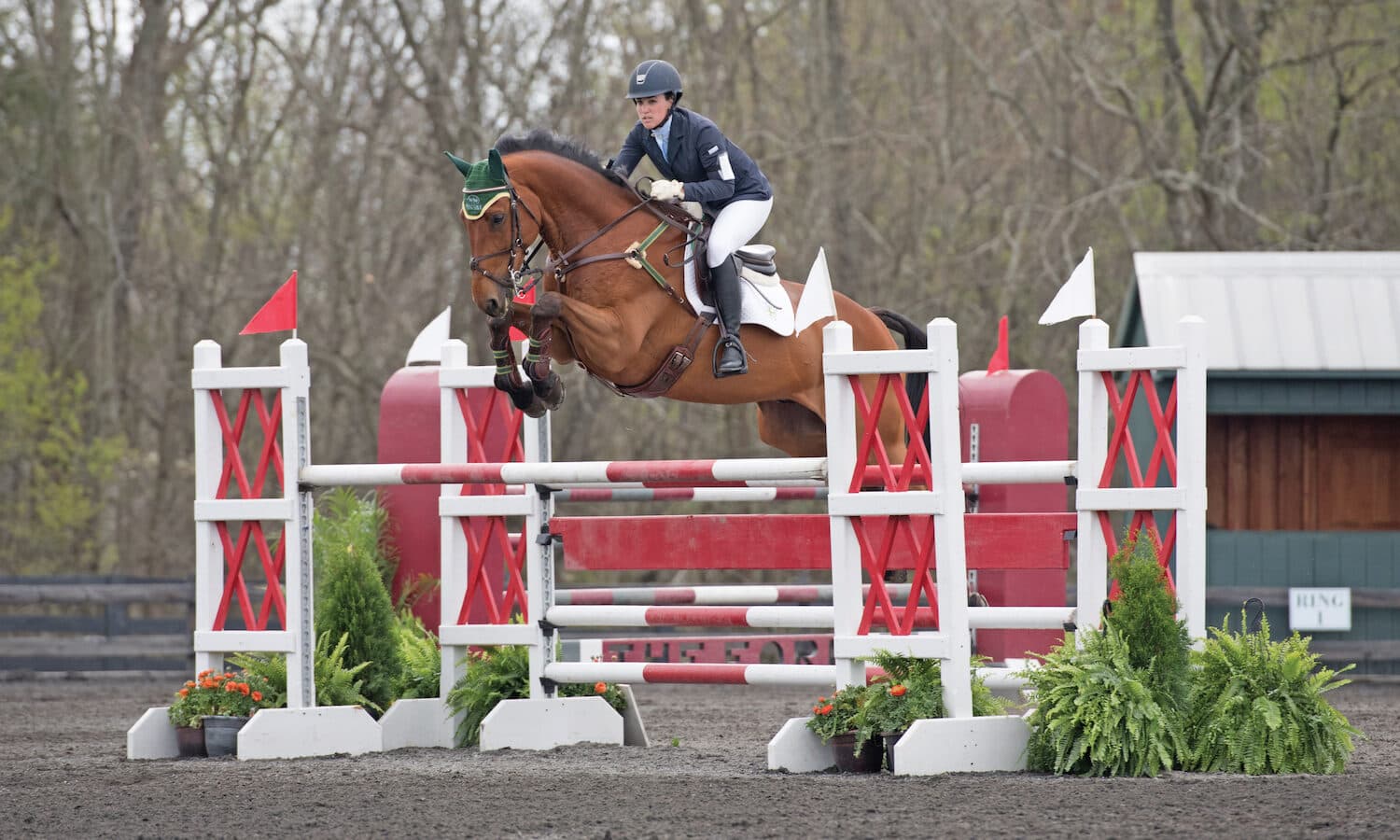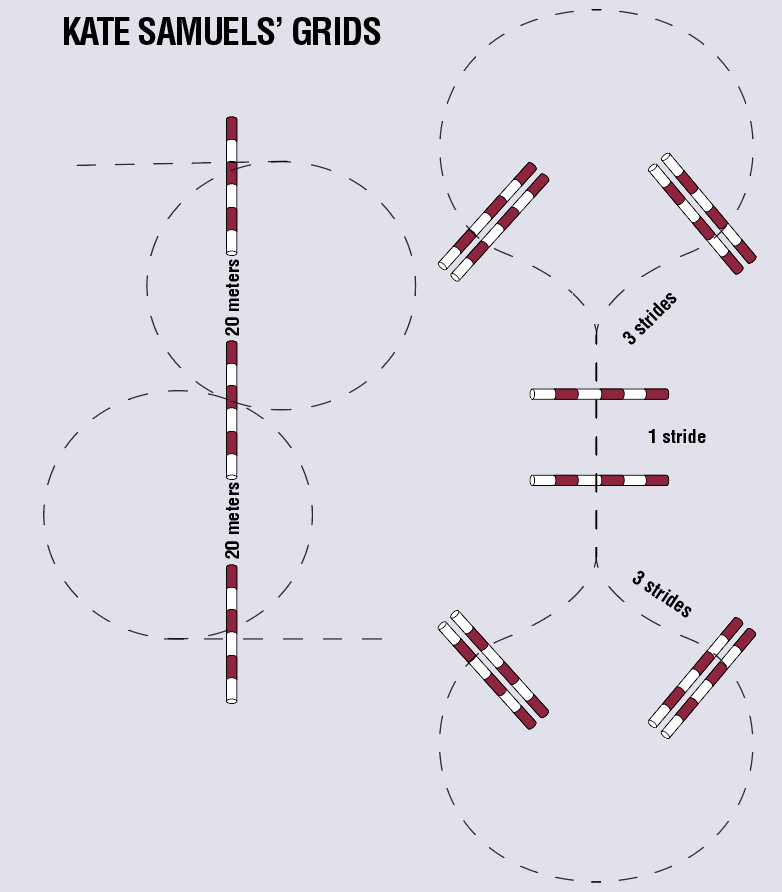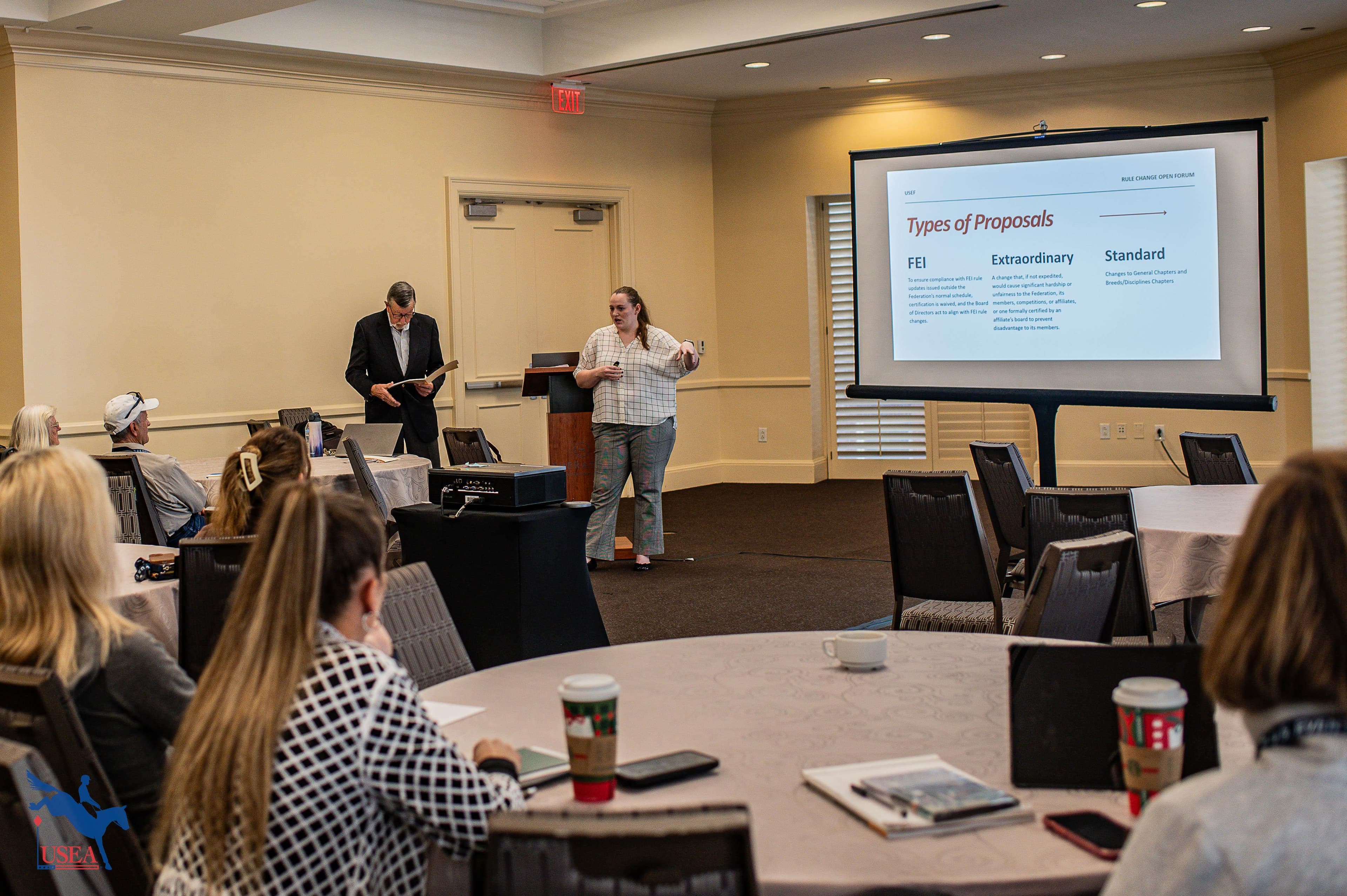Grid Pro Quo with Kate Samuels

Ready to spice things up this winter training season? Do you want to use being stuck in the arena as an opportunity to fine tune your riding? In this series, we are revisiting some of our favorite Grid Pro Quo articles from Eventing USA to help you use the off-season to your advantage and keep you and your horse in tip-top shape for when it's time to get back out there. Click here to check out other past Grid Pro Quo exercises!
WHY:
Like many eventers out there, I don’t have the biggest arena, and I’m often on my own when schooling my horses each day. From a practical standpoint, this exercise is great because you can fit it in most arenas, and it does not involve a lot of changing of fence heights, so there isn’t a lot of getting off and on during your ride. Of course it’s always beneficial to have someone on the ground as an extra set of eyes on your ride.
It is my belief that jumping grids should not only make your horse flexible forwards and backwards, but also side to side. Both of these exercises involve a lot of jumping and turning, which really encourage your horse to bend both ways.
These exercises also have enough variety to be suitable for horses and riders of any level. And regardless of the level, the jumps do not need to be very big in height in order to be effective. With my really young or green horses, I like to do back to back jumping days, and will often concentrate on Grid #1 on the first day, before moving on to Grid #2 on the second day.
HOW:

Everyone is different in terms of what they’re looking for when warming up their horse for a jump session. For me, I like to make sure my horse is laterally flexible before going over a single pole. More importantly, I like to check to make sure that my horse is not falling in through their inside shoulder.
When warming up, I will test my horse’s flexibility and mobility by asking for micro-movements from each corner of my horse. I’ll ask them to move each shoulder in each direction, as well as each hindquarter in either direction. While these micro-movements might not be perceivable by an onlooker, I firmly believe that the ability to influence each of your horse’s different corners individually gives you the ability to make a difference when you’re on course at a show.
Once I’m ready to start jumping, I like to start with Grid #1 and my three small jumps. Depending on the level of the horse or rider, I will sometimes start with the poles on the ground. The goal of this exercise is to have a really nice flow and rhythm through the three jumps.
For a green horse or rider, I will aim to make two even 20 meter half circles over the verticals. As the experience level increases, I will practice varying degrees of angles over the jumps to make the exercise slightly more difficult. The key though is to pre-plan your turn and really work for that plan versus just accepting whatever turn ends up being easier.
Regardless of your level, I like to practice always being on the correct lead throughout this warmup exercise. The greener pairs should aim to be on the correct lead by the time they start their turn to the next jump. Whether you do a simple change or a flying change, the goal is to be regrouped and balanced as you enter your turn.
While there is plenty to do with this exercise with the jumps rather small, it’s also perfectly fine to put the jumps up a bit and practice keeping the same relaxed rhythm over jumps of size.
Once you’re happy with the results from the first exercise, you can either give your horse a pat and call it a day, or you can move on to the second piece of this grid. Like the first exercise, this one works to make your horse into a slinky. The low, wide oxers get your horse to stretch over the jump, but the one-stride of verticals require your horse to coil their springs in order to jump cleanly.
The fun part of this second exercise is to create mini courses on a continuous loop with the goal of jumping in the same relaxed rhythm from the first set of verticals. Each of these jumps can be approached from both leads, making it so that you can simply keep going until your horse settles into this rhythm.
As a trainer and an instructor I really like these continuous loops as they teach both the horse and rider that they need to keep going. While traditional gymnastics have their place in every horse and rider’s program, it can sometimes teach horses to automatically put on the brakes after a jump and teach riders to stop riding once their horse’s feet hit the ground. By creating small courses you teach both that they have to keep thinking and keep working after each jump.
I find that the hardest skill for riders to develop is simply this, to keep going, keep planning, keep fixing. To be a proactive and reactive rider, instead of a passive rider. And while it seems too simple, one of the easiest ways to help develop this skill is to look where you’re going! If you’re not looking where you’re going, you’re not thinking about where you’re going. So if you’re not already looking for your turn in the air, it’s too late. Any onlooker should be able to tell where you’re headed next by where your eye is.
About Kate Samuels
Kate Samuels Equestrian is based in Charlottesville, Virginia, at her family farm in the foothills of the Blue Ridge Mountains. A lifelong horsewoman, Samuels grew up fox hunting and exercising racehorses before finding eventing. She has competed through the CCI4*-S level since 2009 and specializes in starting young horses as well as helping horses with behavioral issues.














